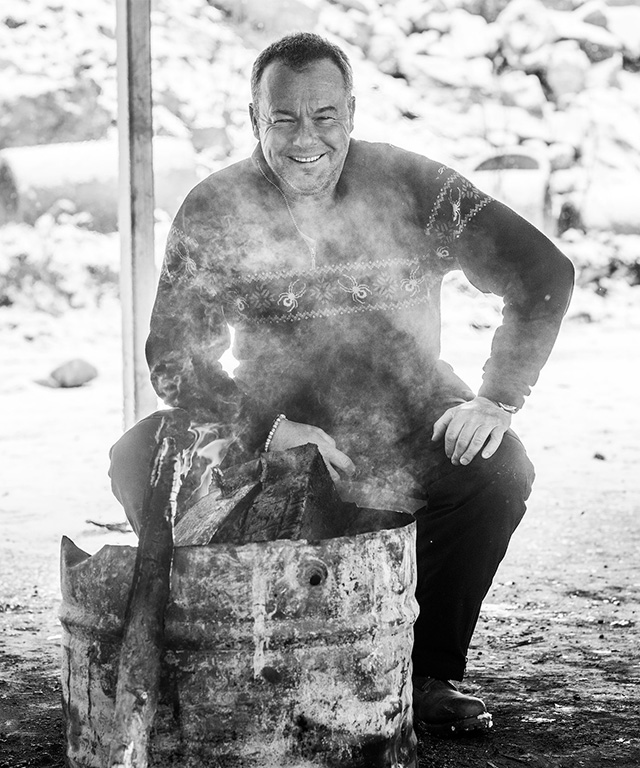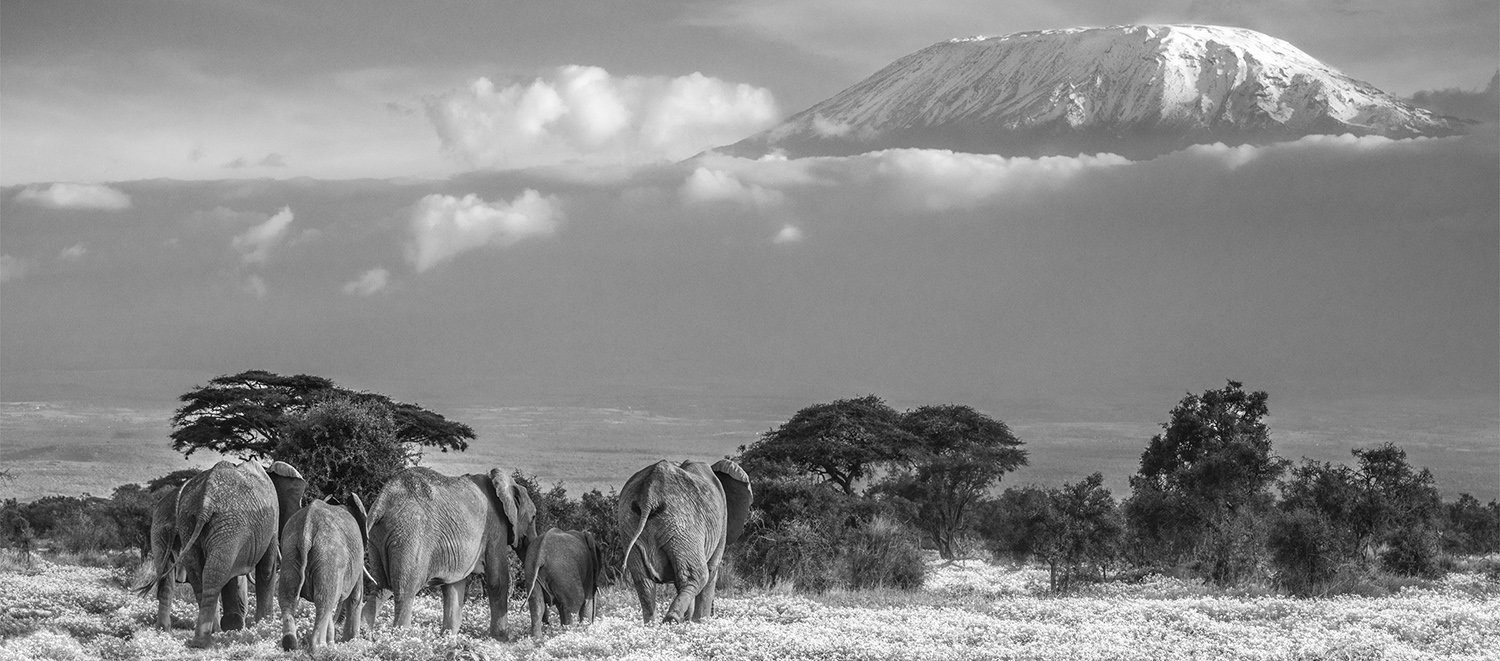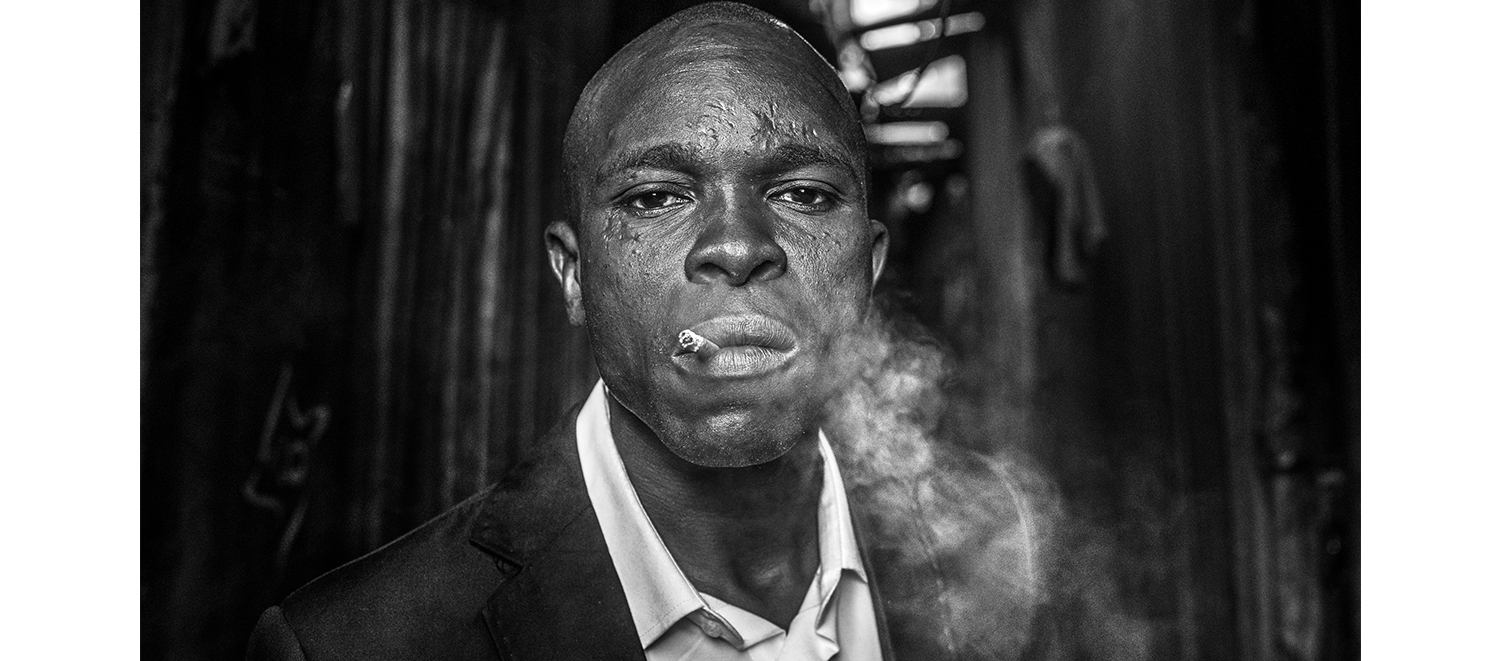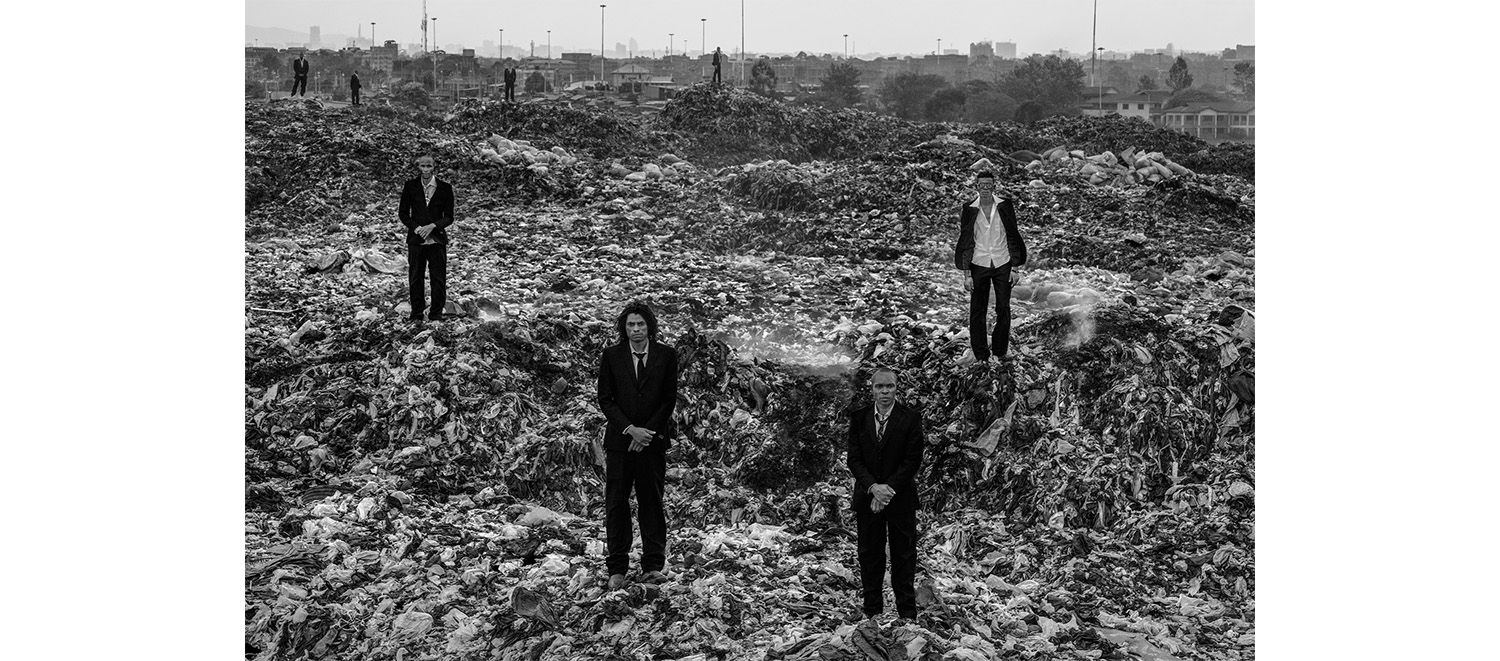
With the Nikon D850 and prime NIKKOR lenses in hand, David juxtaposes two sides of Kenya, profiling Amboseli’s beautiful elephants, known as ‘big tuskers’, against carefully staged images of gang members captured in Dandora, Nairobi, home to one of the largest rubbish sites in the world.
About the Special Project
Nikon European Ambassador and fine art photographer David Yarrow captures the wildness of Kenya – from street life in its bustling capital, Nairobi, to the wildlife of Amboseli's National Park.
Q: Why did you choose Kenya as the location for your Special Project?
I wanted to come to Kenya because I know it well, especially Amboseli where I have spent a lot of time throughout my career. I think working somewhere you feel comfortable and confident really helps streamline the planning and logistics process of a project like this – even before you get your camera out. Amboseli is my favourite (and the best) place in the world to photograph elephants. It’s a raw, elemental amphitheatre where there are 2,000 elephants – some of the biggest in the world – and there’s no doubt I’ve taken some of my favourite images in this special place. Dandora in Nairobi offers something different and locks on to my other style of photography, which is staged scenes in places that are sometimes so removed from our normal everyday life. The 30 acres rubbish heap in Dandora offered a completely unique setting and challenging visual.
Q: What is the connecting theme between these two places and the images you’ve captured?
I’m not a wildlife photographer, and the idea of having two assignments in one week shows the two sides of my photographic 'personality'.
The same country, 300 miles apart, staged or natural, these photos are a clear representation of what drives me – uncovering the relationship between mankind and wildlife and seeing how this can play in different settings.
Yes, the resulting images were planned differently and use different locations, but they are connected by several things: a composition defined by behaviour, the ability to choose what I include/exclude, and most importantly, showing two incredible sides of this country. So many people hear Kenya and think of its incredible wildlife and national parks, but Nairobi is different – there are still so many areas where territorial and gang violence exists, and the city, especially Dandora, continues to battle with waste and environmental problems. I wanted these urban images to have the same visceral impact as the shots of elephants.

Garden of Eden.
Shot with
Nikon D850
| 1/500 sec. | f/7.1 105mm | ISO 250 |
AF-S NIKKOR 105mm f/1.4E ED
Q: How is staged worked different to photographing subjects in their natural environments?
I like to choose places that feel completely detached from anything a viewer has seen before – whether that’s a ghost town in Montana or a place where there has been civil war like Sudan. Or in this case, Nairobi, where there are some tough places going through a time of turbulence. It’s an entirely different cognitive process to wildlife photography, which is often about putting yourself in the best position to take photographs of things happening. With this, you can’t linearly follow a preconception through to a conception, because if an animal doesn’t want to play ball, there’s nothing you can do. With staged work, you have a clear idea of what the result should be. It gives you much more control but is also a real test of your ability as a photographer. The composition is ultimately in your hands, and I like that.
Q: How did you prepare for a project of this size and scale?
I can’t stress enough how important the planning and research stage of a project is. Do your homework and collaborate with people on the ground who will be able to help you get access to the rare visuals you want. Luckily, I knew the areas in Kenya very well, and I knew the flat landscape would lend itself to dramatic visuals with a clear backdrop. You also need to surround yourself with a formidable team of people who will make life as easy as possible. A mistake many photographers can make is that the excitement of going somewhere special is enough for them, but when they arrive, they haven’t planned what they are going to do when they get there. Luckily, in Kenya, we had a fantastic team who helped me mentally and visually prepare and got in touch with the right people in advance to make sure we were working safely.
Q: How did you go about finding the 'big tusker' in Amboseli?
As well as playing home to some magnificent elephant herds, this part of Kenya is also home to a handful of the largest and most endangered elephants in the world, otherwise known as 'big tuskers'. Sadly, there are only 22 of these beautiful creatures, whose tusks are so long they touch the ground, left in the wild.
I have been to this part of the world before to photograph these remarkable animals, and knew I had a good chance of seeing the largest elephant out here again. He’s called Tim, and when you see him, you know you’ll never photograph anything like him. Of course, when we were on the ground, we had to be careful not to irritate Tim in his natural environment. That comes from experience and help from the game keepers. We are merely voyeurs of his life, rather than being coercive or altering his daily routine.
The fact the resulting photo is a front-on look at this elephant in all its glory, revealing every texture of his skin, the ambition and intelligence in his eyes, and the beautiful tusks he carries with pride, is exactly what I came out to capture.

On the left: Colossus. Shot with
Nikon D850
| 1/1250 sec. | f/8 200mm | ISO 200 |
AF-S NIKKOR 200mm f/2G ED VR II
On the right: The Walk of Life. Shot with
Nikon D850
| 1/1600 sec. | f/5 400mm | ISO 160 |
AF-S NIKKOR 400mm f/2.8G ED VR
Q: What equipment did you use throughout the shoot?
Whatever lens you use to photograph an elephant, if you’re sitting in a jeep, anyone with an understanding of cameras or the capabilities of your equipment will know that photo has been taken from an artificial position in a car. Therefore, to capture the enormousness of an elephant in all its glory, you must photograph from the ground. You can either do so from lying underneath the jeep (which although tricky, protects you), using a remote controller (weather-depending), or the option I felt was preferable on this shoot – get as close as you safely can. Having worked with Tim before, I was confident and understood his behaviours well enough to get within about 20-25metres. Given how close I was, I didn’t need anything longer than the razor-sharp AF-S NIKKOR 200mm f/2G ED VR II or the AF-S NIKKOR 105mm f/1.4E ED, both incredible prime Nikon lenses with a tight frame. Prime lenses are nearly always my choice for projects like this.
On the camera body side of things, I wanted to photograph Tim just being Tim, not necessarily charging around, but just quietly going about his business. This meant I didn’t need a high number of frames per second, but a super-crisp resolution. The Nikon D850 was ideal for this. It also means that if you want to print the photograph to display it life-size (which I am planning to), the image quality will look as good as it does on the computer screen.
For the profile of the deputy lieutenant of the gang, I used the AF-S NIKKOR 35mm f/1.4G. He has a powerful, sinister face, and the 35mm’s wide-angle portrait abilities captured this perfectly.

The Debt Collector.
Nikon D850
| 1/200 sec. | f/3.5 35mm | ISO 500 |
AF-S NIKKOR 35mm f/1.4G
Q: How did you set up for the shots in Nairobi?
Dandora in Nairobi is a very difficult place to shoot. It’s hosts one of the words biggest rubbish dumps, with such high volumes of chemical waste meaning you have to wear masks. Sadly, the health risks of this waste site are being felt by the suburb’s inhabitants.
The area also has a large gang culture, and I knew ahead of the trip that I wanted to profile some of its members. We contacted the deputy lieutenant of the gang in advance to make sure they were happy to be part of it. With this unusual location, I wanted to create something biblical. This is not about taking a portrait of an individual against a rundown area of Nairobi – it’s about showing something thought-provoking. To achieve this scale, we built and used a ladder to elevate the shot. This image is the epitome of a visual disconnect – the juxtaposition of very smart, fit men in their black suits against the backdrop of the rubbish dump.

Dandora.
Nikon D850
| 1/2000 sec. | f/10 105mm | ISO 500 |
AF-S NIKKOR 105mm f/1.4E ED
Q: What challenges did you face during your Special Project?
I’ve been to Amboseli about 25 times, and at varying times of the year. The unexpectedly high-levels of rainfall made this trip especially tough, and I’ll be honest in saying I wasn’t quite prepared for it. The terrain was soaked, access became difficult (in fact, we got stuck a couple of times), which made it harder for us to predict and work out where the elephants and the big tuskers would be (which is usually where there is no water). Another challenge was the light.
A black and white picture should be a like a piano – a piano has 88 keys and the best pianists make sure every key is played. A black and white picture should go from blown-out white to rich black, touching all the shades in between.
That is hard when the light is flat, and the light during this trip was tricky, especially in Dandora. No photographer wants to be limited to the ‘middle of the keys’, but I quite often was, which made that perfect picture even harder to achieve. Of course, no shoot is complete without its challenges, and this trip certainly shows the importance of adapting to the circumstances and reacting spontaneously.
Q: What does it mean to you to be able to do a project like this with Nikon?
I always count myself lucky to be a photographer, and I am grateful that Nikon has been with me every step of my career. Every project is important, but this project is symbolic of my close relationship with the brand, its cameras and its lenses which I look through almost every day, and which have allowed me to take some career-defining shots. I hope this project inspires people to live their passion projects, to aim high with the quality and uniqueness of their shots, and to go to travel as much as possible to see extraordinary and unexpected things.






 Contact Us
Contact Us